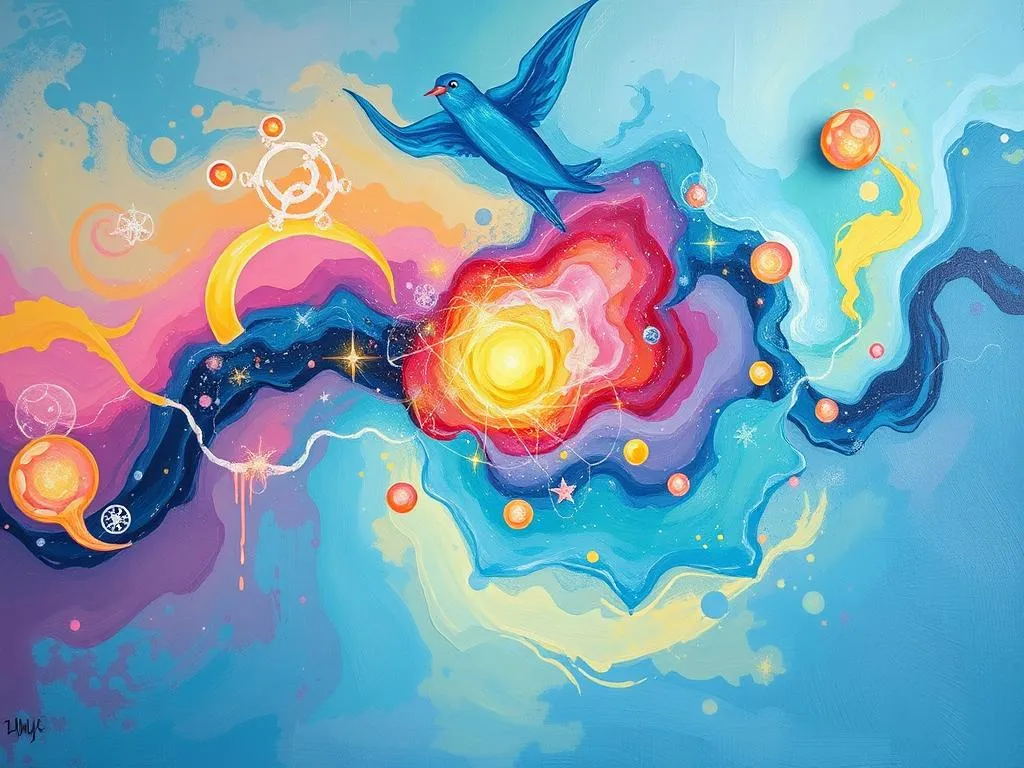
Dreams have long been a source of fascination for humanity, serving as windows into our subconscious minds. They can evoke a range of emotions and present vivid scenarios that often leave us pondering their meanings upon waking. The relevance of dreams in our lives cannot be understated; they can provide insight into our waking thoughts, fears, and desires. Understanding dream symbolism can help us decode these nightly narratives, offering a deeper understanding of ourselves and our experiences.
Symbolism and Meaning
Every dream is unique, yet many share common symbols that resonate with human experience. These symbols can be akin to a language, a means through which our subconscious communicates. One of the most prevalent symbols in dreams is water, which represents the flow of emotions. Depending on the context, water can signify calmness or turbulence, reflecting our emotional state. A tranquil lake might suggest peace and clarity, while a raging storm could indicate inner turmoil or unresolved feelings.
Another common symbol is flying, often associated with freedom and liberation. The sensation of soaring high can reflect a yearning for escape from the constraints of daily life, or it may symbolize achieving one’s goals. However, if the experience of flying is accompanied by fear or difficulty in control, it might highlight feelings of inadequacy or anxiety about one’s ambitions.
Chasing is yet another frequent dream motif. Being pursued in a dream can represent avoidance or unresolved issues in waking life. The identity of the pursuer can provide additional layers of meaning; for instance, being chased by a wild animal might signify a fear that is primal or instinctual, while being pursued by a familiar figure could represent a confrontation with a personal conflict or a desire to escape responsibilities.
Houses are also significant symbols in dreams, often representing the self or the mind. Each room can symbolize different aspects of one’s personality or experiences. For example, a cluttered attic may indicate repressed memories or unresolved issues, while a beautifully decorated living room might reflect a sense of comfort and stability in one’s current life.
These symbols can be viewed through various lenses—psychological, cultural, or spiritual. From a psychological perspective, dreams are often interpreted as manifestations of our subconscious mind, revealing hidden fears or desires. Culturally, symbols may carry different meanings; for instance, in some cultures, snakes symbolize transformation, while in others, they may represent deceit. Spiritually, dreams can be seen as messages or guidance from a higher power, urging individuals to reflect on their life paths.
Key Scenarios and Variations
Dreams are highly dynamic and can present a myriad of variations, each with its unique implications. For instance, consider the flying dream: if one dreams of flying effortlessly, it may suggest a sense of achievement and self-confidence. Conversely, if the dreamer struggles to remain airborne or feels a sudden drop, it could signify anxiety about losing control or fear of failure.
Similarly, the chasing scenario can take many forms. A person being chased by a monster might reflect a fear of confronting a looming challenge, whereas being chased by an ex-partner could symbolize unresolved feelings or a need to confront past relationships. The emotions felt during the chase—fear, exhilaration, or even indifference—can significantly alter the interpretation of the dream.
The setting of the dream also plays a crucial role. A dream set in a familiar place, like one’s childhood home, might evoke nostalgia or unresolved childhood issues. In contrast, a dream set in an unfamiliar environment could suggest feelings of insecurity or exploration of new aspects of oneself.
Recurring dreams often hold particular significance. They can indicate unresolved conflicts, persistent worries, or desires that have not been addressed in waking life. For example, dreaming repeatedly about failing an exam may point to significant stress related to performance or self-worth. Recognizing these patterns can guide individuals toward areas in their lives that require attention or change.
Another variation worth noting is the lucid dream, where the dreamer is aware they are dreaming and can often exert control over the dream narrative. This experience can be empowering, suggesting a high level of self-awareness and confidence in one’s life. However, it can also indicate a desire to escape reality, especially if the lucid dreamer frequently chooses to avoid confronting difficult situations.
Real-Life Connections and Takeaways
Understanding the symbolism and variations of dreams can serve as a powerful tool for self-reflection and personal growth. The connection between dreams and real-life situations is often profound, offering insights that can lead to meaningful changes.
For readers looking to explore their dreams more deeply, keeping a dream journal can be an invaluable practice. Recording dreams immediately upon waking can help capture the nuances and emotions of the experience, making it easier to identify patterns and recurring themes over time. By reflecting on these entries, individuals can gain a clearer understanding of their subconscious concerns or desires.
It’s also essential to consider how current life circumstances might influence dream content. Stressful periods can lead to more anxiety-laden dreams, while times of joy and accomplishment may inspire more positive dream scenarios. This connection underscores the idea that dreams are not merely random occurrences but are deeply intertwined with our waking lives.
Engaging in self-reflection is crucial when interpreting dreams. Ask yourself what emotions or thoughts arise when recalling a particular dream. How do the symbols resonate with your current life situation? Are there unresolved issues that need addressing? By answering these questions, individuals can begin to make connections that provide clarity and understanding.
Furthermore, embracing the lessons that dreams offer can lead to personal growth. If a dream reveals a fear of failure, it may be worth exploring areas in life where you feel insecure. On the other hand, if a dream reflects a sense of freedom and achievement, it can serve as a motivational reminder to pursue your passions and aspirations.
Incorporating mindfulness practices can also enhance dream interpretation. Techniques such as meditation can promote a deeper awareness of one’s thoughts and feelings, enriching the dream analysis process. By cultivating a more profound understanding of oneself, individuals may find that their dreams become clearer and more meaningful.
Lastly, it’s beneficial to share and discuss dreams with others. Sometimes, external perspectives can shed light on aspects of a dream that might not be immediately apparent to the dreamer. Engaging in conversations about dreams can foster connections and open new avenues of understanding.
In conclusion, dream interpretation is a deeply personal and transformative journey. By exploring the symbolism, variations, and real-life connections of dreams, individuals can unlock the rich tapestry of their subconscious minds. Dreams are not just fleeting images that fade with the morning light; they are powerful reflections of our inner selves, inviting us to embark on a path of self-discovery and growth. So, the next time you find yourself lost in a vivid dream, take a moment to reflect on its meaning. What messages might it hold for you? What aspects of your life might it be encouraging you to explore? Embrace the mystery of your dreams and allow them to guide you toward greater self-awareness and understanding.







